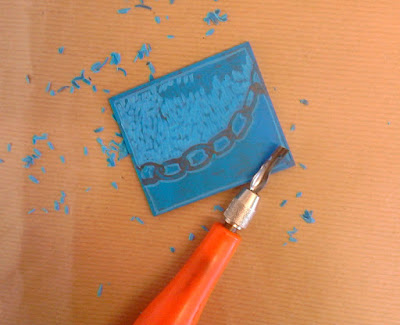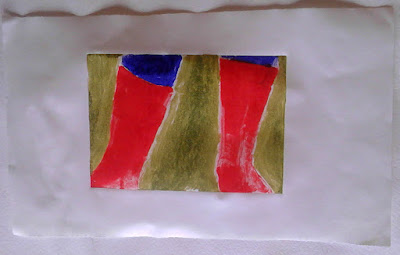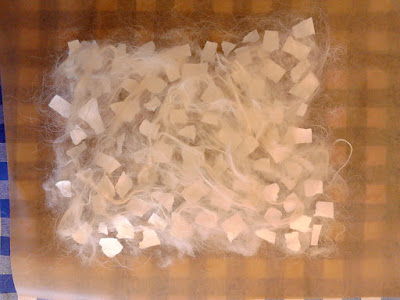Well, the presents are all wrapped, the house and tree are decorated, gingerbread cookies made... with just a few things left to do, I am definitely in full-swing Christmas mode. Certainly this has been a humdinger of a year, but still there are many things to be grateful for. One of the last things for me will be, through this blog, to send out good wishes into the ether, for readers to have a happy, healthy holiday and a joyous new year. I will not be posting again until next year. Keep well, stay safe.
Musings about art, writing, music, travel and food (life, the universe & everything...) by Lorraine Whelan
Wednesday 23 December 2020
Wednesday 16 December 2020
self-portraits with home made ink!
As part of my studio residency (whether at home due to lockdown, or at Signal Arts Centre when allowed) a daily self-portrait is de rigueur. I have blogged about previous selfies from this year's residency here and introduced the residency, with links to previous years here.
During August of this year, both myself and my husband, sculptor James Hayes, took part in the Aos Dara/Umha Aois combined symposium. I posted about my work here and here, but one of the things James did as part of his work was to experiment with making "iron gall ink" out of oak galls found in Tomnafinnoge Wood. He recorded the entire process, posting a, 11.5 minute video to youtube, which may be seen here. He exhibited the video, along with other work, in the culminating exhibition to celebrate work done during the Aos Dara/Umha Aois combined symposium this year along with work done during last year's Aos Dara symposium. I blogged about the exhibition here.
James also used the same method to make a jar of ink from walnut shells, which he had found during a site meeting at a park in Dublin. Taking up a pen nib and holder, I used the walnut ink to create a self portrait one afternoon, while in lockdown.
Wednesday 9 December 2020
Signal Arts Centre Christmas Craft Fair
With the second lockdown ended on December 1, Signal Arts Centre prepared in advance to open its doors to its annual Christmas Craft Fair.
Wednesday 2 December 2020
lino printing at home
My intention for this year's studio residency at Signal Arts Centre was threefold: to do a daily self-portrait (see blog post here), make a number of unique silk fibre pages (see blog post here), and to create a new series of prints as part of my body of work, Memory Is My Homeland. My initial intention was to create monoprints on the handmade silk fibre paper. However, after doing several tests, which I discussed here, I decided to do linoprints, which I discussed here. Everything was going swimmingly until a second lockdown meant that I was going to be working at home instead of the Signal studio.
Since I normally work in my home studio, theoretically this wasn't a big deal BUT the road where Signal Arts Centre is located was blocked off due to construction on a nearby bridge and the printing press was still in the studio at Signal. As I had hoped, the road was only blocked off for two weeks, during which time I could prepare lino blocks, cut paper, etc. so that I would be good to go once I retrieved the press. In any case, my home studio is in the attic so any printmaking would have to be done downstairs. For several weeks then, the kitchen was the area for preparing paper and inking the blocks.
Wednesday 25 November 2020
lino printing - the start of a new series
I started the Signal Arts Centre studio residency at the end of September and I blogged about starting it here. My plans for the studio this year included a daily self-portrait (which I blogged about here), making silk fibre paper for printing on (which I blogged about here) and printmaking. My initial plan was to create a series of monoprints and print them on the silk fibre paper. However, after trials (here), I found that the monoprints, though I liked the results on the paper I made, would actually be too vibrant for my Memory Is My Homeland series and even working small, would be too big for the silk fibre paper, which I wanted to be as memorable as the printed image. I have worked on very tiny lino blocks before and decided that this format would be better suited to the planned series. I had five images in mind and wanted to start work on them immediately.
I was happy with this test print and didn't do any further work on the chain lino. The image derives from my memory of the chain barriers in front of the first house in Toronto where I lived. I remembered sitting on the chains and treating it like a swing. I always wondered about this memory, until one time passing the area on a streetcar I saw the "barriers" that separated the house lawns from the surrounding footpaths. They were very low chains between short bollards, no more than two feet high. It made sense of my memory - my family moved from that house when I was two years old.
The test print of the gate at Knockeen was also satisfactory. This small gate, seemingly within the hedge separating the second house in which I lived in Kerry from the fields in front of the house, had a glass ball (a buoy?) affixed to it's post.
Though I bought the red wellies in Galway in the summer of 1988 because my shoes were soaked from a downpour, I practically lived in these wellies, rain or shine, while in Kerry 1994-1996. I wanted to keep the image simple, so did no further work on the lino.
I have spent about half my life living in Ireland now, just as long as I've lived in Toronto, and although I haven't always been in Bray, it is most certainly my "home". There is a Victorian promenade at the seafront, looking out over the Irish Sea, and it easily becomes a genteel symbol of the town's history.
Wednesday 18 November 2020
daily self-portrait
During my three studio residencies at Signal Arts Centre, I have always started the day with a self-portrait. I have previdusly blogged about my studio residencies many times, the main beginning or progress posts can be found here (2018), here (2019) and here (2020) and there are a number of other posts that refer to those residencies. For me focussed observation is a good warm-up to making art and a good way to start the day. The main decision is regarding what media to use. This sketch is from my second week at the studio (Oct 9) and the medium is watercolour pencil.
Wednesday 11 November 2020
Home Sweet Home Goodbye published
I founded Precariat Press in the spring of this year with the publication of my first chapbook of poems in mind; My husband, James Hayes, designed the logo for me after an evening of brainstorming. The cover design is based upon my earliest existing piece of "art" - a goodbye card I made for my grandparents when they were returning to Ireland from a visit to Toronto in 1967. I talk about that in a previous blog, here. This was the first time I met them, and the card was found in my grandmother's handbag after she (my Oma) died in 1980 and it was returned to me.
Wednesday 4 November 2020
pre-lockdown printmaking
It's only been a couple of weeks since I left the studio residency at Signal Arts Centre, due to the second lockdown, but I did get a lot done in the three weeks that I was there, and am happily continuing the momentum. I posted a blog at the start of the residency here.
My plan while at Signal was to focus on creating silk-fibre paper (I had learned how to do this in a Zoom workshop in the summer and blogged about that workshop here) and use these pages as surfaces for alkyd monoprints. I spent the first week and a bit at Signal making silk fibre paper, which I blogged about here and then I wanted to start printing, but first I did some test prints of images that I was interested in creating as part of Memory Is My Homeland. I have previously blogged about the origins of this body of work here and have continued to blog about it numerous places on this blog (NB, at the beginning I simply referred to it as "The Home Project").
One of my reference photos is of my Mum & I, in the 1980s, standing in the backyard of my parents house in Bray in front of the clothesline, pegs awaiting laundry. The backyard was a very tiny space, off the kitchen and, while I lived in this house for a couple of years in the late 1980s, it mirrored my own backyard on the same street later when I returned to the east coast from living in Kerry, on the west coast. In any case, it was the image of colourful plastic pegs, waiting on an empty line with a white-washed stone wall behind them, that interested me.
Because I knew I wanted the handmade silk-fibre paper to be as featured as nuch as the printed image, I was working on small acetate plates, using alkyd paints to create monoprints. However, even with a tiny brush, I could not get the details of the pegs on the line, and the press just seemed too happy to squeeze the colour enough to blur the image. Although I do not think this image (below) worked, I did not give up on the idea of the peg image!
Wednesday 28 October 2020
Signal studio residency: making silk fibre paper
In June I had taken a Zoom workshop, with artist Tunde Toth, on silk fibre papermaking (which I blogged about here) and immediately knew I planned to make more of the paper for my printmaking when taking up studio residency at Signal Arts Centre come autumn. Well, that time came fast enough and I spent the first week (plus a bit of the second week) focussed on making silk fibre paper. One of the first things for me to do, then, was set up a work station: spreading a clean table cloth over the table, having water bottle spritzer filled, iron to hand, scissors, ruler, bag of silk fibre, parchment paper roll, small dry brushes, pigments, and strips of Fabriano paper that I planned to use as inclusions.

























































